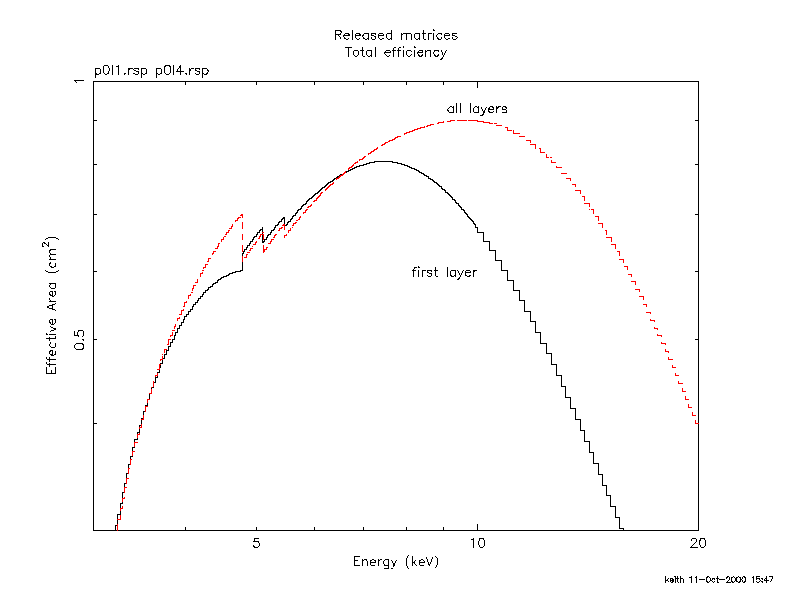
The first figure
shows the effective area for detector 0, layer 1 and the sum of all layers.
Our expectation, indeed our requirement, that the effective area of the
top layer alone is everywhere less than or equal to the effective area
of the sum of all layers is clearly not met.

The problem has been traced to the internals of pcarmf which, when
asked for all layers, first calculates the response matrix for layer 3,
then calculates the response matrix for layer 2 and adds this in, and
finally claculates the response matrix for layer 1, and adds this.
The net response in layers 2 and 3 is quite small, and rapidly changing,
near the xenon L-edge, and in some way this introduces an undesirable
numerical effect, which disappears when the order of addition is
reversed (as it will be in the next release).
In the meantime, there is a simple work-around. Users who make
matrices separately for each of the layers can add the results using
ADDRMF. The resulting total effective area, and the area for layer
1 alone are shown here.

Use of the new procedure should reduce the residuals observed near
the Xenon L-edge for observers who add all the layers (typically the bright
sources which use binned modes). Users of layer 1 only will be unaffected.
Keith Jahoda (keith.jahoda@gsfc.nasa.gov)